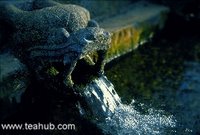Based production region, Oolong can be devided into four categories:
Oolong from South FuJian. The most famous one is AnXi Tie Guan Yin. One thing that needs to be pointed out is that while Tie Guan Yin means oolong teas made of leaves from Tie Guan Yin tree in AnXi, Tie Guan Yin only means oolong teas processed with the Tie Guan Yin technique in Taiwan.
Oolong from North of FuJian. The most famous one is WuYi rock tea. Da Hong Pao, Xiao Hong Pao, Rou Gui are all WuYi rock teas.
Oolong from Guang Dong. The most famous one is Feng Huang Dan Cong. Feng Huang Shui Xian is a popular tea among Cantonese tea drinkers.
Oolong from Taiwan. Oriental Beauty, Dong Ding Oolong are all famous examples of Taiwan Oolong.
More talks regarding Oolong tea can be found at our Oolong Talk .
